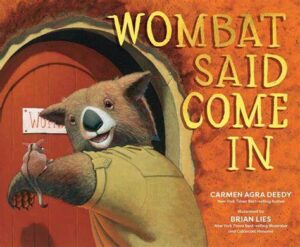Love is in the air here at OPB, and we’re sharing that love with you via a wonderful list of heartwarming picture books.
If we missed one that makes your heart melt, please drop the name of that title in the comments. We always appreciate hearing what books you love!
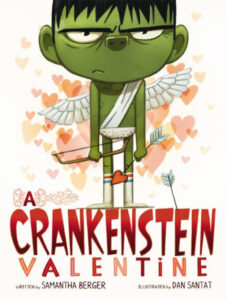 A Crankenstein Valentine by Samantha Berger, illustrated by Dan Santat (December 2014)
A Crankenstein Valentine by Samantha Berger, illustrated by Dan Santat (December 2014)
From Goodreads: “Even the crankiest monsters have hearts in this Valentine tale from fan favorite author Samantha Berger and Caldecott medalist illustrator Dan Santat.
Cheesy cards, allergy-inducing bouquets, and heart-shaped everything? YECHHHH! It’s enough to turn anyone into a monster! An ordinary kid becomes Crankenstein on the most lovey-dovey, yuckiest day of the year: Valentine’s Day.
Can Crankenstein find a way to turn his sour day sweet? Can a monster find a little love in his heart? Find out in the monstrously funny A Crankenstein Valentine.”
Pages: 40
Reading Age: 3–6
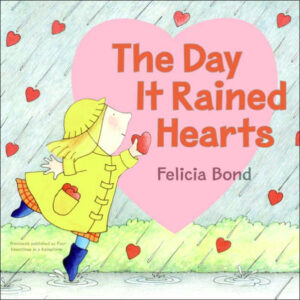 The Day It Rained Hearts by Felicia Bond (December 2006)
The Day It Rained Hearts by Felicia Bond (December 2006)
From Goodreads: “A creative and sweet story, perfect for Valentine’s Day, that helps open the hearts of young readers. From the beloved illustrator of If You Give a Mouse a Cookie.
One day it rains hearts, and Cornelia Augusta catches them. She realizes that the hearts are perfect for making valentines. Each heart is special in its own way, and Cornelia Augusta knows exactly who to send them to: her animal friends.
A fun way to spark creativity and thoughtfulness! The perfect book to pair with Valentine’s Day crafts.”
Pages: 36
Reading Age: 2–5
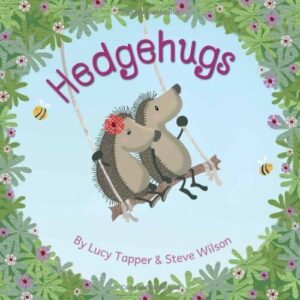 Hedgehugs by Lucy Tapper & Steve Wilson (September 2014)
Hedgehugs by Lucy Tapper & Steve Wilson (September 2014)
From Goodreads: “Horace and Hattie are hedgehogs, and the very best of friends. Together, they make daisy chains, splash in puddles, and have tea parties. But there is one thing they can’t do—hug! They are just too spiky. Throughout the seasons, these two hedgehogs will try many different ways of hugging. But will Horace and Hattie find a hug that feels just right?”
Pages: 32
Reading Age: 1–4
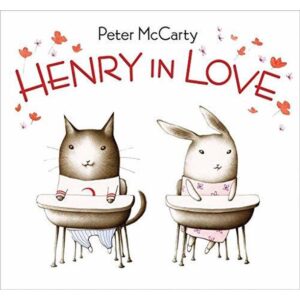 Henry in Love by Peter McCarty (December 2009)
Henry in Love by Peter McCarty (December 2009)
From Goodreads: “Henry is a bit of a dreamer and not much of a talker.Then there’s Chloe, who says what she thinks and knows how to turn a spectacular cartwheel.
This is the story of how one blueberry muffin makes all the difference.”
Pages: 48
Reading Age: 2–7
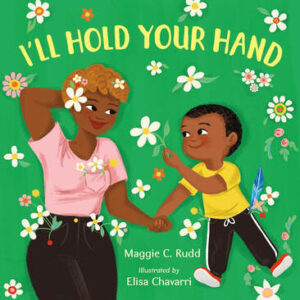 I’ll Hold Your Hand by Maggie C. Rudd, illustrated by Elisa Chavarri (February 2022)
I’ll Hold Your Hand by Maggie C. Rudd, illustrated by Elisa Chavarri (February 2022)
From Goodreads: “This sweet picture book celebrates the unbreakable bond of a parent’s support for a child though life’s milestones, from learning to walk to the first day of school and all the highs and lows in between.
From the night you arrive to your first night away,
from learning to crawl to healing a broken heart,
and for all the highs and lows in between…
through every season, every challenge, and every joy, you are loved.
With sweet, lyrical text and stunning art, I’ll Hold Your Hand celebrates the unbreakable bond of family, and all the ways our actions can say “I love you” louder than words.”
Pages: 40
Reading Age: 3–6
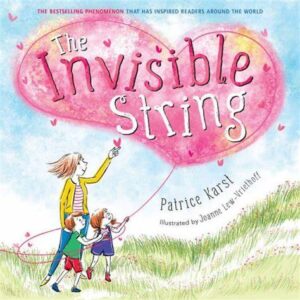 The Invisible String by Patrice Karst, illustrated by Joanne Lew-Vriethoff (October 2018)
The Invisible String by Patrice Karst, illustrated by Joanne Lew-Vriethoff (October 2018)
From Goodreads: “A picture book about the unbreakable connections between loved ones–updated with new illustrations and an afterword from the author.
A mother tells her two children that they’re all connected by an invisible string. “That’s impossible!” the children insist, but still they want to know more: “What kind of string?” The answer is the simple truth that binds us all: An Invisible String made of love. Even though you can’t see it with your eyes, you can feel it deep in your heart, and know that you are always connected to the ones you love. Does everybody have an Invisible String? How far does it reach? Does it ever go away?”
Pages: 40
Reading Age: 3–7
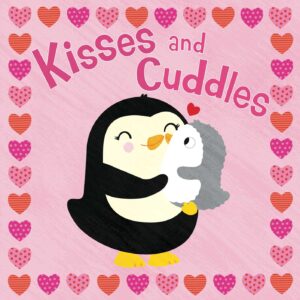 Kisses and Cuddles by Little Bee Books (December 2015)
Kisses and Cuddles by Little Bee Books (December 2015)
From Goodreads: “A little penguin loves to do many things during his fun day, but nothing beats getting kisses and cuddles from his mama!
Follow a little penguin as he spends his day doing everything he loves–such as eating pancakes, playing with his toys, drinking hot chocolate, spotting rainbows, and more. But what does he love the most? Kisses and cuddles from his mama!”
Pages: 16
Reading Age: 1–4
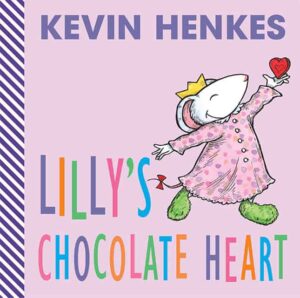 Lilly’s Chocolate Heart by Kevin Henkes (December 2003)
Lilly’s Chocolate Heart by Kevin Henkes (December 2003)
From Goodreads: “Lilly loves her chocolate heart.
Will she save it?
Forever and ever?
What do you think?”
Pages: 24
Reading Age: 1–4
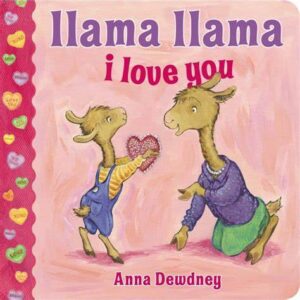 Llama Llama I Love You by Anna Dewdney (December 2014)
Llama Llama I Love You by Anna Dewdney (December 2014)
From Goodreads: “Beloved storyteller Anna Dewdney shows young children sweet ways to express their love on Valentine’s Day and all year round in Llama Llama I Love You!
With short and simple rhyming text, the Llama Llama board books introduce Llama Llama to babies and toddlers before they’re ready for longer full-length stories. And their small size and durable pages are perfect for little hands.
In Llama Llama I Love You, little llama shows his friends and family how much he loves them with heart-shaped cards and lots of hugs. What could be sweeter than Llama Llama on Valentine’s Day?”
Pages: 14
Reading Age: 1–3
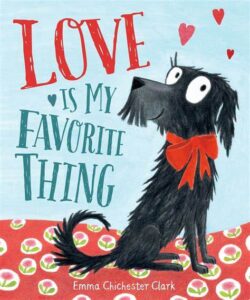 Love Is My Favorite Thing by Emma Chichester Clark (August 2015)
Love Is My Favorite Thing by Emma Chichester Clark (August 2015)
From Goodreads: “Starring an enthusiastic pooch whose joy, optimism and love know no bounds, this lively picture book is based on Emma Chichester Clark’s own dog, and joyfully celebrates unconditional love.
Plum has lots of favorite things—catching sticks, her bear, her bed—but really, LOVE is her absolute favourite thing. She loves her family and all the things they do together. Sometimes, however, Plum’s exuberance causes trouble, and she just can’t help being naughty. But fortunately, love is such a great thing that even when she makes mistakes, Plum’s family still adores her.”
Pages: 32
Reading Age: 2–6
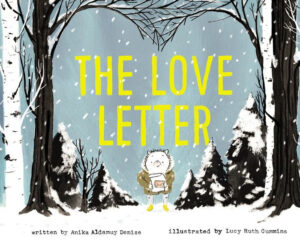 The Love Letter by Anika Aldamuy Denise, illustrated by Lucy Ruth Cummins (October 2019)
The Love Letter by Anika Aldamuy Denise, illustrated by Lucy Ruth Cummins (October 2019)
From Goodreads: “Fall in love with this endearing and adorable picture book that illustrates how a little bit of heart goes a long way to making the world a better place.
Hedgehog, Bunny, and Squirrel are best friends. One day, they each find a letter. But not just any letter…
A love letter.
My word!
My whiskers!
Aww, nuts!
Someone loves them. But who? The answer may surprise you!
Celebrated author Anika Aldamuy Denise and beloved illustrator Lucy Ruth Cummins deliver this heartwarming tale about a wonderful mix-up that reminds us of the joys of friendship.
Makes for a perfect Valentine’s Day gift, or for any time you want to tell someone in your life how much you love them!”
Pages: 36
Reading Age: 1–5
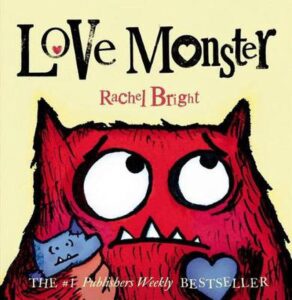 Love Monster by Rachel Bright (December 2014)
Love Monster by Rachel Bright (December 2014)
From Goodreads: “Featuring the only Monster in Cutesville, LOVE MONSTER is a wonderfully warm and witty look at how sometimes, when you least expect it, love finds you… From a phenomenal picture book talent.
It can be tough being the only funny-looking Monster in Cutesville, but this Monster is not one to hang around and feel sorry for himself, so he’s off – out into the big wide world to look for someone to love him.
He looks high, he looks low and he looks everywhere in-between, but it’s only when he’s just about to give up that he finally finds what he is looking for…
Featuring an instantly charming main character who will appeal to children and adults alike, LOVE MONSTER is a warm and witty tale about the power of taking action from a terrific talent new to the HarperCollins list.”
Pages: 32
Reading Age: 1–4
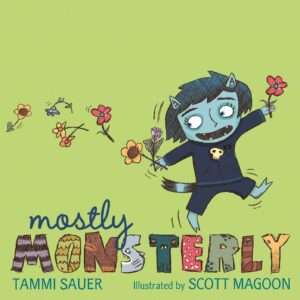 Mostly Monsterly by Tammi Sauer, illustrated by Scott Magoon (August 2010)
Mostly Monsterly by Tammi Sauer, illustrated by Scott Magoon (August 2010)
From Goodreads: “Bernadette might seem like an ordinary monster, but sometimes she likes to do some very unmonsterlike things, like pick flowers. And pet kittens. And bake.
When the time comes for Bernadette to go to Monster Academy, she’s just a teensy bit nervous. Her classmates just don’t understand her. They’d rather uproot trees than sing friendship songs. And they prefer fried snail goo to Bernadette’s homemade cupcakes with sprinkles. Can Bernadette find a way to make friends at school and still be herself?”
Pages: 40
Reading Age: 4–8
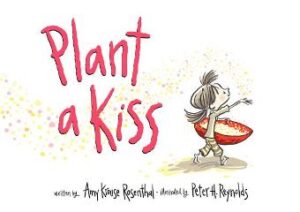 Plant a Kiss by Amy Krouse Rosenthal, illustrated by Peter H. Reynolds (December 2015)
Plant a Kiss by Amy Krouse Rosenthal, illustrated by Peter H. Reynolds (December 2015)
From Goodreads: “Little Miss planted a kiss …
One small act of love blooms into something bigger and more dazzling than Little Miss could have ever imagined in this epic journey about life, kindness, and giving.
New York Times bestselling author Amy Krouse Rosenthal and award-winning illustrator Peter H. Reynolds have teamed together for the first time, creating what may soon prove to be a perennial favorite.”
Pages: 36
Reading Age: 1–5
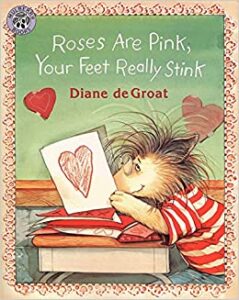 Roses Are Pink, Your Feet Really Stink by Diane deGroat (December 2022)
Roses Are Pink, Your Feet Really Stink by Diane deGroat (December 2022)
From Goodreads: “This Valentine’s Day favorite read-aloud will prompt lots of giggles, as well as discussions on kindness and forgiveness.
Gilbert is all set to write fifteen friendly valentine cards to his classmates. But how can he write a nice poem for the boy who tweaked his nose, or the girl who made fun of his glasses? Instead, Gilbert writes two not-so-nice valentines…and signs the wrong name on both!
When his classmates read his poems, their feelings are hurt, and Gilbert’s prank quickly turns into pandemonium. But with the help of a friend and an honest apology, there’s always time for a change of heart on Valentine’s Day.”
Pages: 32
Reading Age: 4–7
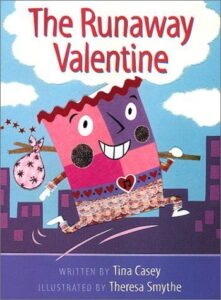 The Runaway Valentine by Tina Casey, illustrated by Theresa Smythe (January 2001)
The Runaway Valentine by Tina Casey, illustrated by Theresa Smythe (January 2001)
From Goodreads: “Victor has the glitziest glitter, the shiniest sparkles, and a special button that can play twenty different love songs! He’s the fanciest valentine in the card shop. That is, until he falls off the rack and gets swept into a dusty corner. And when he marches out of the shop and sets out on his own, he tatters his corners, frazzles his edges, and loses all his lace!But no matter what happens to him, one person after another finds that Victor is just what they were looking for. And through a wild Valentine’s Day journey he brings them all together — which, after all, is what valentines do best.”
Pages: 32
Reading Age: 3–6
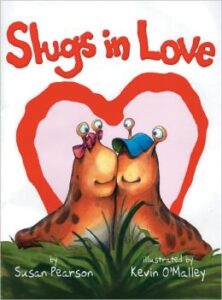 Slugs in Love by Susan Pearson, illustrated by Kevin O’Malley (November 2012)
Slugs in Love by Susan Pearson, illustrated by Kevin O’Malley (November 2012)
From Goodreads: “Marylou loves everything about Herbie—how his slime trail glistens in the dark, how he can stretch himself thin to squeeze inside the cellar window, and how he always finds the juiciest tomatoes. But Marylou is a shy slug. How can she get Herbie to notice her? Find out how Marylou woos her beloved in this must-have love story that’s perfect for Valentine’s Day.”
Pages: 34
Reading Age: 4–7
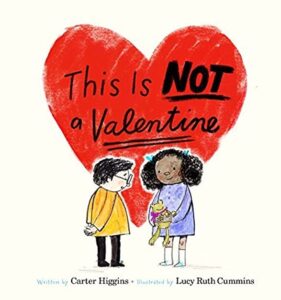 This Is Not a Valentine by Carter Higgins, illustrated by Lucy Ruth Cummins (December 2017)
This Is Not a Valentine by Carter Higgins, illustrated by Lucy Ruth Cummins (December 2017)
From Goodreads: “This book is not a valentine. It doesn’t have lacey edges or sugary hearts. But it is full of lucky rocks, secret hiding spots, and gumball machine treasures. This is a book about waiting in line and wishing for cinnamon buns. About recognizing that if you care so much about someone not thinking you care, maybe you really do. But wait—isn’t that exactly what love is about? Maybe this book is sort of a valentine after all. A testament to handmade, wacky, bashful, honest love—sure to win over the hearts of all readers—this offering from debut picture book author Carter Higgins and children’s book veteran Lucy Ruth Cummins is the perfect gift to celebrate every relationship, from parent to child, sibling to sibling, partner to partner, crush to crush.”
Pages: 48
Reading Age: 5–8
Tiny T. Rex and the Impossible Hug by Jonathan Stutzman, illustrated by Jay Fleck (March 2019)
From Goodreads: “Meet Tiny, a diminutive but determined T‑Rex in a big world, as he embraces all obstacles against him in his quest to learn how to hug.”
Pages: 48
Reading Age: 2–5
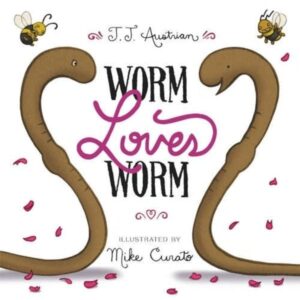 Worm Loves Worm by J.J. Austrian, illustrated by Mike Curato (January 2016)
Worm Loves Worm by J.J. Austrian, illustrated by Mike Curato (January 2016)
From Goodreads: “Perfect for fans of And Tango Makes Three and The Sissy Duckling, this irresistible picture book is a celebration of love in all its splendid forms from debut author J. J. Austrian and the acclaimed author-illustrator of Little Elliot, Big City, Mike Curato.
You are cordially invited to celebrate the wedding of a worm … and a worm.
When a worm meets a special worm and they fall in love, you know what happens next: They get married! But their friends want to know—who will wear the dress? And who will wear the tux?
The answer is: It doesn’t matter. Because Worm loves Worm.”
Pages: 32
Reading Age: 3–7


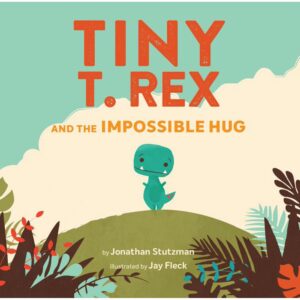
 Maria Modugno has had an amazing career in children’s literature. Currently, she serves as Executive Editorial Director at Random House Studio, an imprint of Random House Books for Young Readers. Prior to that, she was vice president and Editorial Director at HarperCollins Children’s Books where she acquired such popular series as
Maria Modugno has had an amazing career in children’s literature. Currently, she serves as Executive Editorial Director at Random House Studio, an imprint of Random House Books for Young Readers. Prior to that, she was vice president and Editorial Director at HarperCollins Children’s Books where she acquired such popular series as 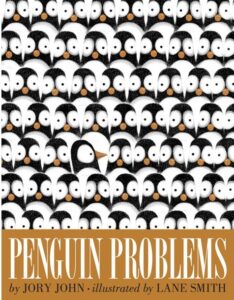
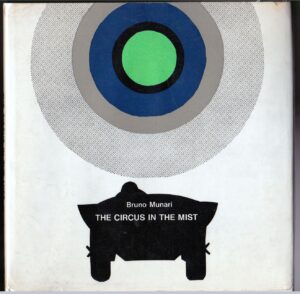
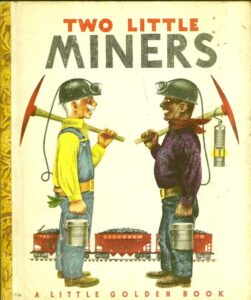

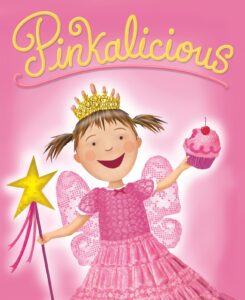
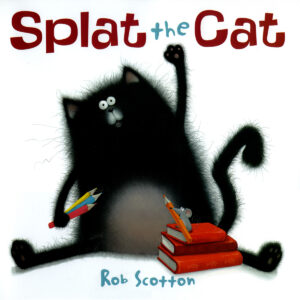
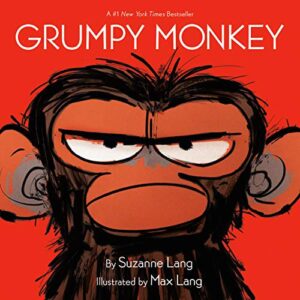
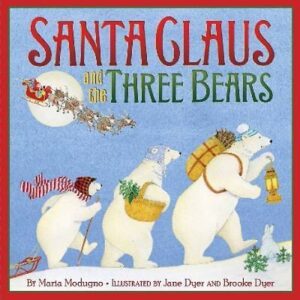
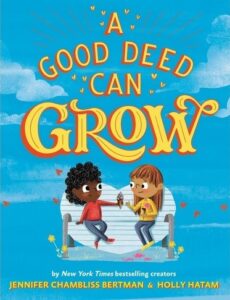 A Good Deed Can Grow
A Good Deed Can Grow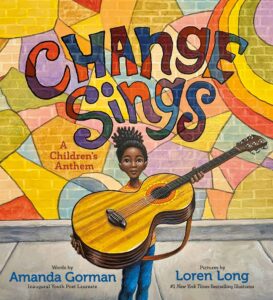
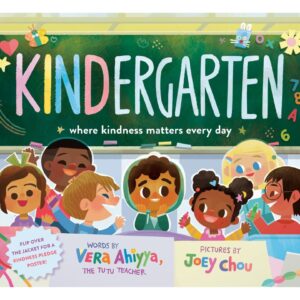
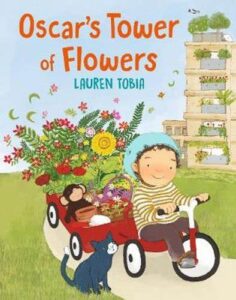
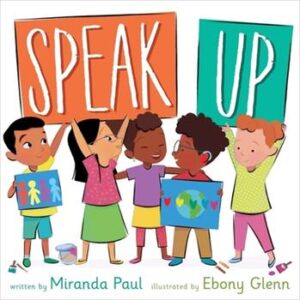
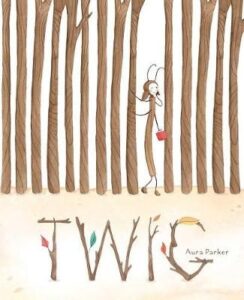
 Welcome to Matt Forrest Esenwine, the first Author Interview of 2023! Wahoo!
Welcome to Matt Forrest Esenwine, the first Author Interview of 2023! Wahoo!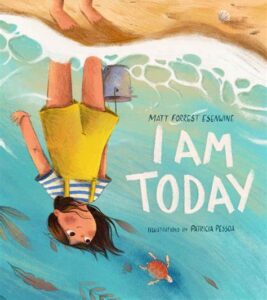
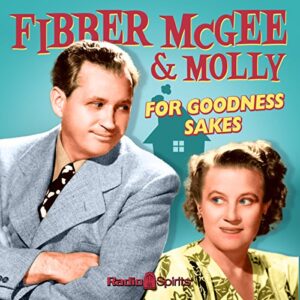
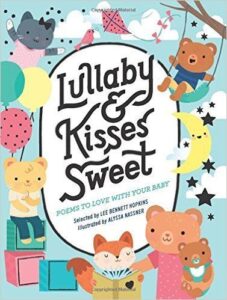
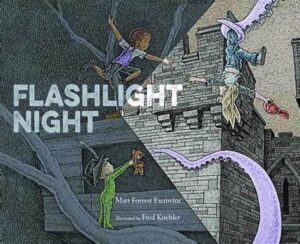
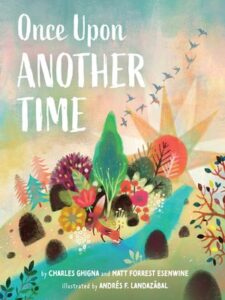
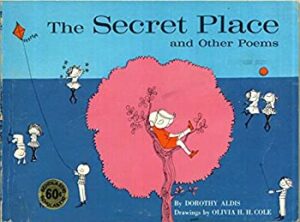
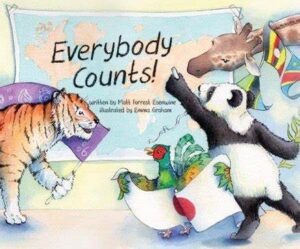
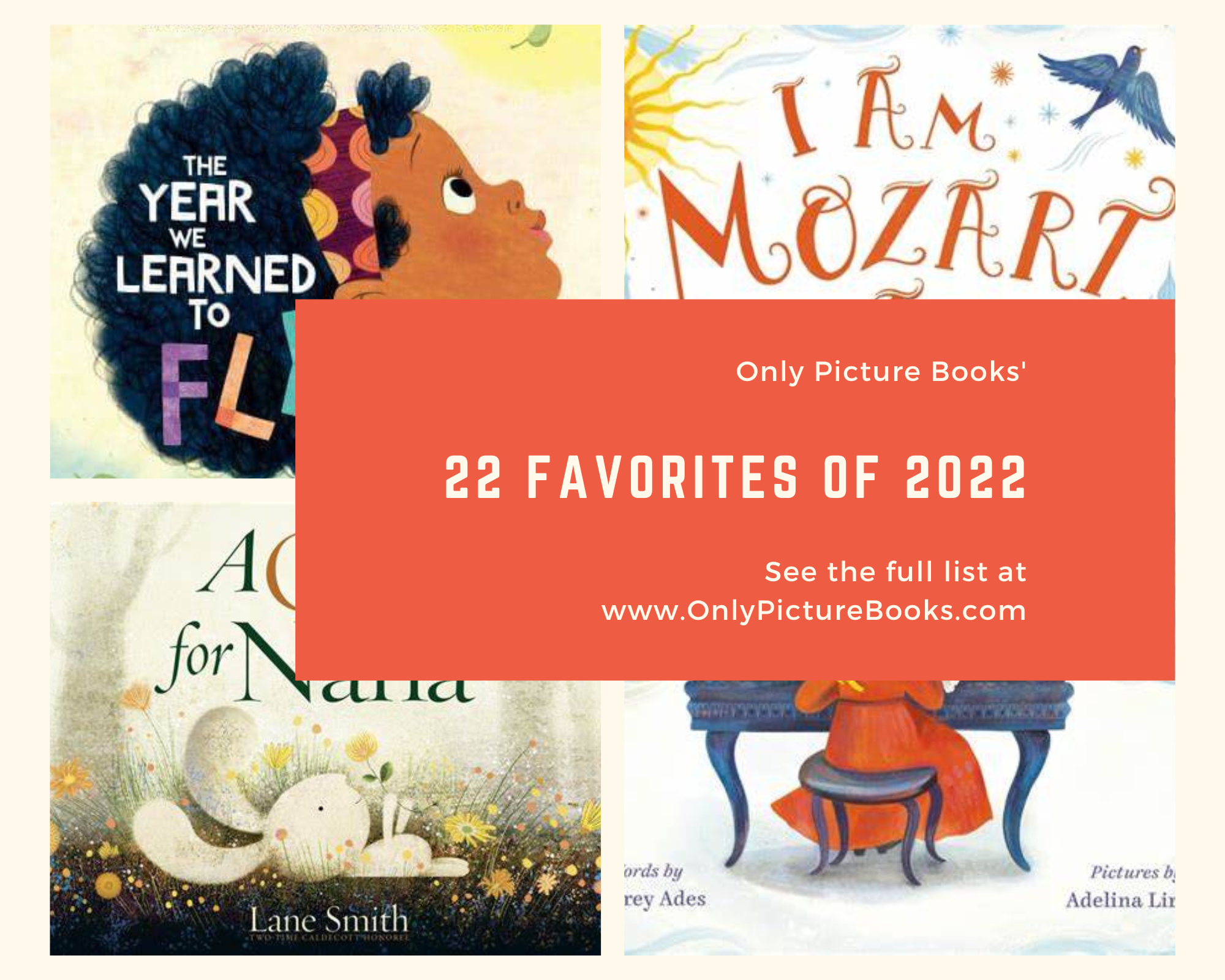
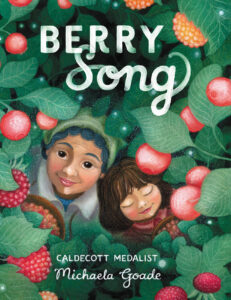
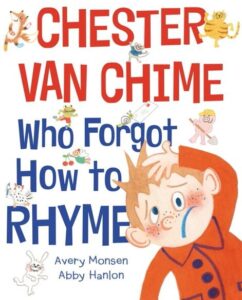
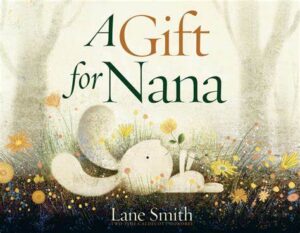
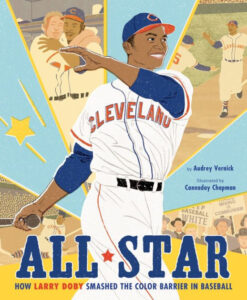
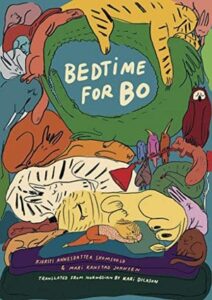
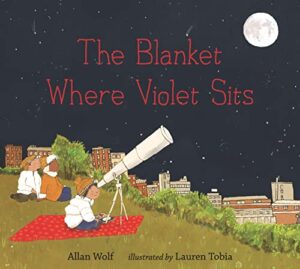
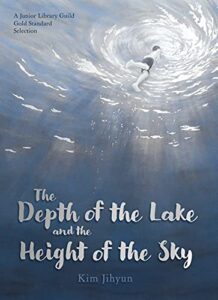
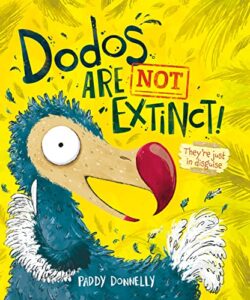
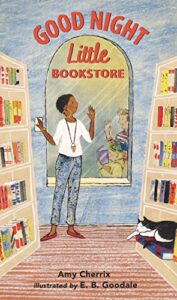
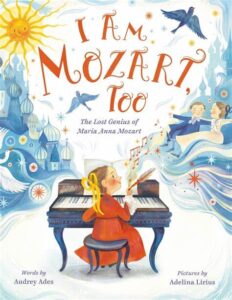
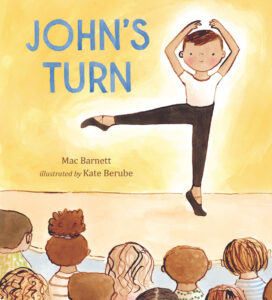 John’s Turn
John’s Turn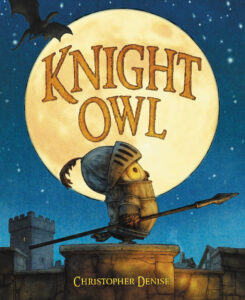 Knight Owl
Knight Owl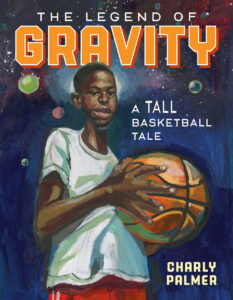
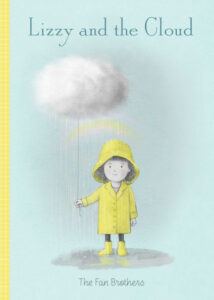
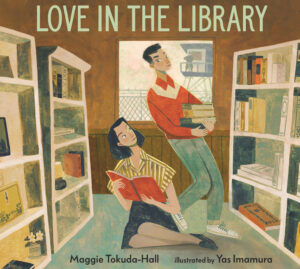
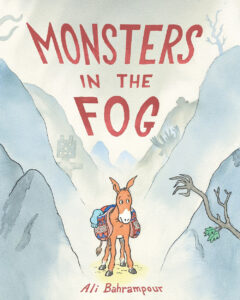
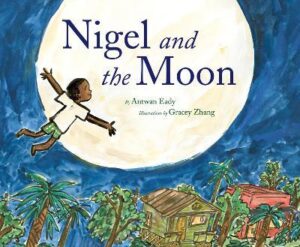
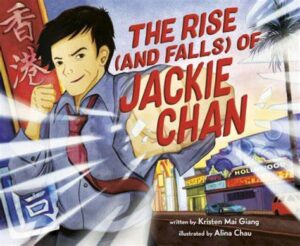
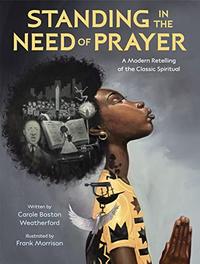
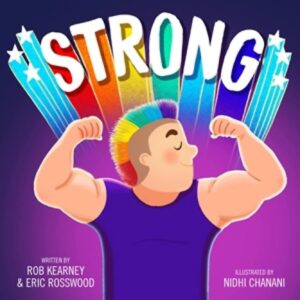 Strong
Strong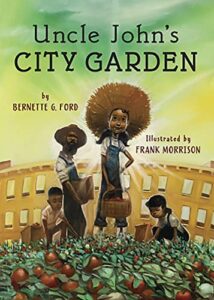
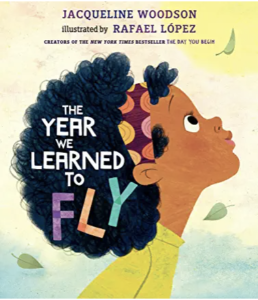

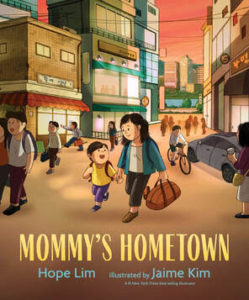
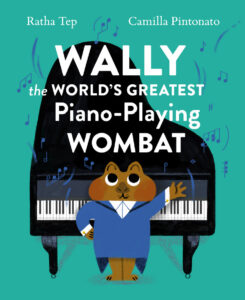 Wally, the World’s Greatest Piano-Playing Wombat
Wally, the World’s Greatest Piano-Playing Wombat